Life jackets, also known as personal flotation devices (PFDs), are an essential safety gear for a wide range of water-based activities. Whether you’re boating, fishing, or simply enjoying a day at the beach, it’s crucial to understand the importance and components of these lifesaving tools.
The primary function of a life jacket is to keep its wearer afloat in water by providing buoyancy, thus reducing the risk of drowning. But what exactly goes into making these vital pieces of equipment? Let’s delve deeper into their composition.
The materials used in constructing life jackets play a critical role in determining their effectiveness and durability. Over time, PFD manufacturers have experimented with various material combinations to optimize performance while maintaining comfort for users.
In this article, we’ll explore the different types of materials commonly found in life jackets and how they contribute to their overall functionality. We’ll also discuss some recent advances in technology that could potentially revolutionize future designs and usage scenarios for PFDs around the world.
Buoyancy-Providing Materials
Life jackets, also known as personal flotation devices (PFDs), are composed of materials that provide buoyancy in water. The primary purpose of these materials is to keep the wearer afloat and maintain their head above the surface in order to breathe.
Two common types of buoyancy-providing materials used in life jackets are inherently buoyant foam and inflatable chambers. Inherently buoyant foam, such as closed-cell PVC or polyethylene foam, offers consistent floatation without requiring any action from the user. These foams trap air within individual cells, which prevents water absorption and provides reliable buoyancy.
In contrast, inflatable life jackets contain one or more sealed air chambers that can be inflated either manually by blowing into an oral inflation tube, manual operated by pulling the cord or automatically via a CO2 cartridge when submerged in water. The main advantage of inflatable PFDs is their compact size and light weight before inflation; however, they may require regular inspection and maintenance to ensure proper function during emergencies.
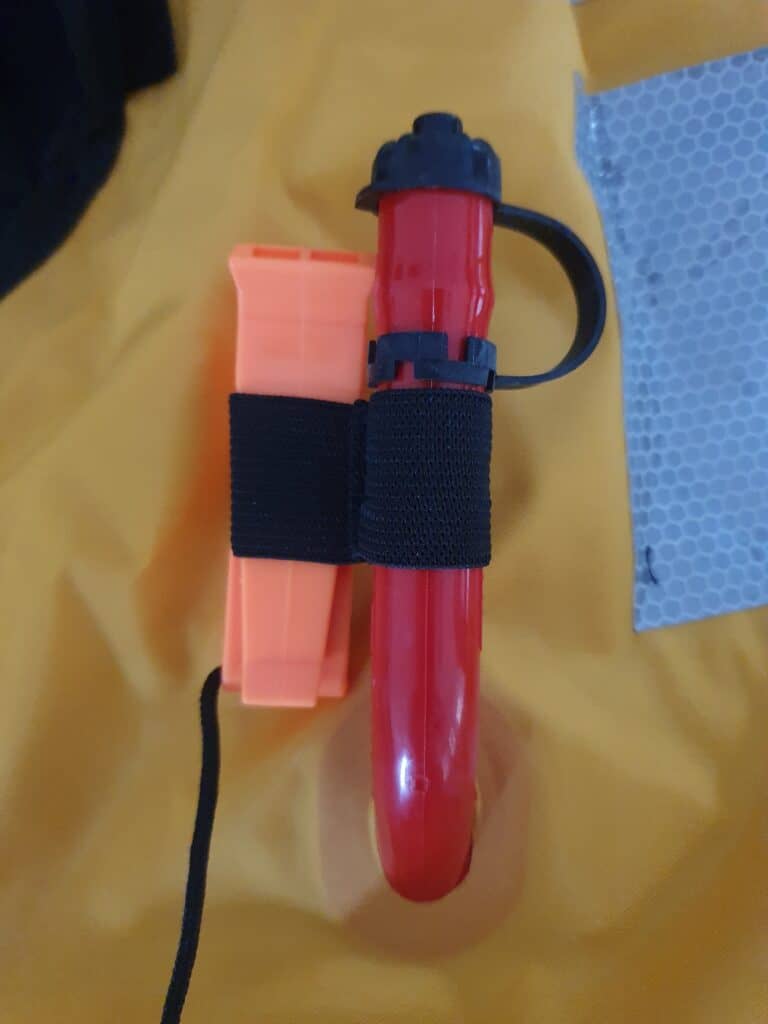 | 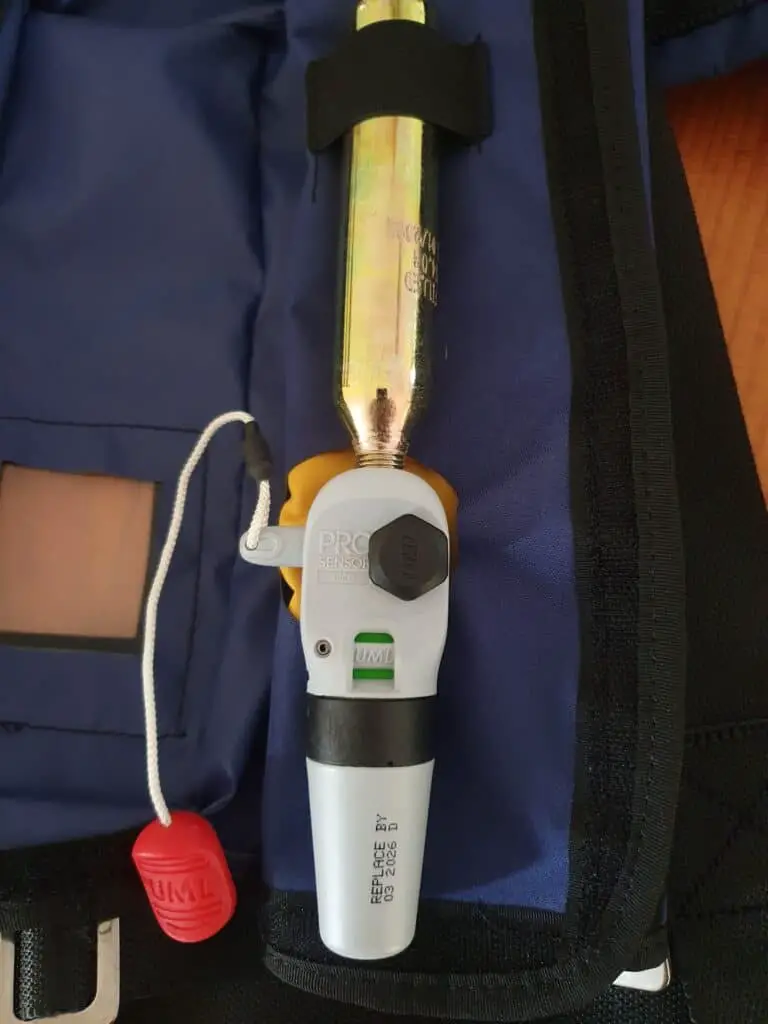 |
The outer shell of life jackets is typically made from durable materials that are resistant to abrasion, punctures, and the harsh environment often encountered during water-based activities. Commonly used fabrics include nylon or polyester as these provide a good balance between durability, performance, and affordability. High-end life jackets may employ more advanced materials like Cordura® for increased resistance to wear and tear in demanding situations.
Outer Shell And Fabric Choices
When selecting a life jacket, it’s essential to consider factors such as comfort, breathability, buoyancy retention, and drying time alongside durability concerns. The type of fabric selected can greatly impact these characteristics.
For instance, some lightweight options like ripstop nylon offer excellent breathability while still providing adequate strength. On the other hand, heavy-duty materials might improve the overall lifespan but compromise on flexibility and airflow around the body when worn for extended periods. In general terms there are cheap jackets using cheaper materials and slightly more expensive jackets using better materials.
It is crucial to weigh these considerations against intended use and personal preferences when making an informed decision about which material best meets one’s needs in a life jacket.
Comfort And Fit Components
Life jackets are like a tailor-made suit, designed to provide both comfort and safety in aquatic environments. A number of key factors contribute to their ability to strike this delicate balance – let us explore the components that influence comfort and fit.
The first crucial aspect is the material used for constructing life jackets. Typically made from durable nylon or polyester fabric, these materials serve as an outer shell that encases soft foam panels responsible for providing buoyancy. The foam itself can be composed of either inherently buoyant closed-cell foam or inflatable chambers filled with air or gas. Inflatable models often incorporate CO2 cartridges, which allow for automatic inflation upon immersion in water or manual activation by pulling a cord.
Furthermore, life jackets come in various shapes and sizes to accommodate different body types and preferences; some have segmented panels while others boast contoured designs that mold to the wearer’s torso for optimal fit. It is essential that wearers choose life jackets suited specifically to their size and weight since proper fitting ensures maximum effectiveness during use.
Adjustability is another vital component when it comes to maintaining comfort while wearing a life jacket. Straps and buckles enable users to fine-tune the tightness around their chest, waist, or shoulders according to personal preference without compromising safety features such as buoyancy levels or securing mechanisms.
Many modern designs also include mesh panels along the back area, promoting ventilation on hot summer days spent out on the water. By prioritizing adjustability alongside other critical elements like material composition and design structure, manufacturers ensure that every individual finds a well-fitted life jacket offering utmost protection against potential hazards.
Innovations In Pfd Technology
Innovations in personal flotation device (PFD) technology have led to significant improvements in materials, design, and functionality.
Early life jackets were predominantly made of cork or balsa wood blocks enclosed within a canvas cover; however, modern PFDs are constructed using lightweight and durable synthetic materials. A key development has been the introduction of foam-based materials such as polyvinyl chloride (PVC), polyethylene (PE), or closed-cell foam for buoyancy. These advanced foams not only provide reliable floatation but also offer increased comfort and flexibility for wearers.
Another important innovation is the invention of inflatable life jackets. Inflatable PFDs use compact air chambers that can be manually or automatically inflated with carbon dioxide when needed, providing greater buoyancy without adding bulk. The Co2 bottle is a one-off use. If operated this will need to replace with the same size canister for your lifejacket to operated correctly. This type of PFD is particularly useful in situations where mobility and freedom of movement are essential, such as water sports or recreational boating activities.
Additionally, advancements in sensor technology have enabled some automatic inflation models to detect immersion in water and trigger inflation accordingly – further enhancing user safety during emergencies on the water.
How Can I Dispose of Old Life Jackets Properly?
When it comes to reusing old life jackets effectively, there are a few options available. One way is to donate them to local organizations that provide boating or water safety programs. Another option is to repurpose them by turning them into cushions, pet beds, or even flotation devices for outdoor activities. Proper disposal ensures that old life jackets continue to serve a purpose while keeping others safe.
Frequently Asked Questions
How Do I Properly Clean And Maintain My Life Jacket To Ensure Its Longevity And Effectiveness?
To properly clean and maintain your life jacket, ensuring its longevity and effectiveness, follow these simple steps:
If you have an automatically operated jacket you will need to take the auto cartridge off before cleaning.
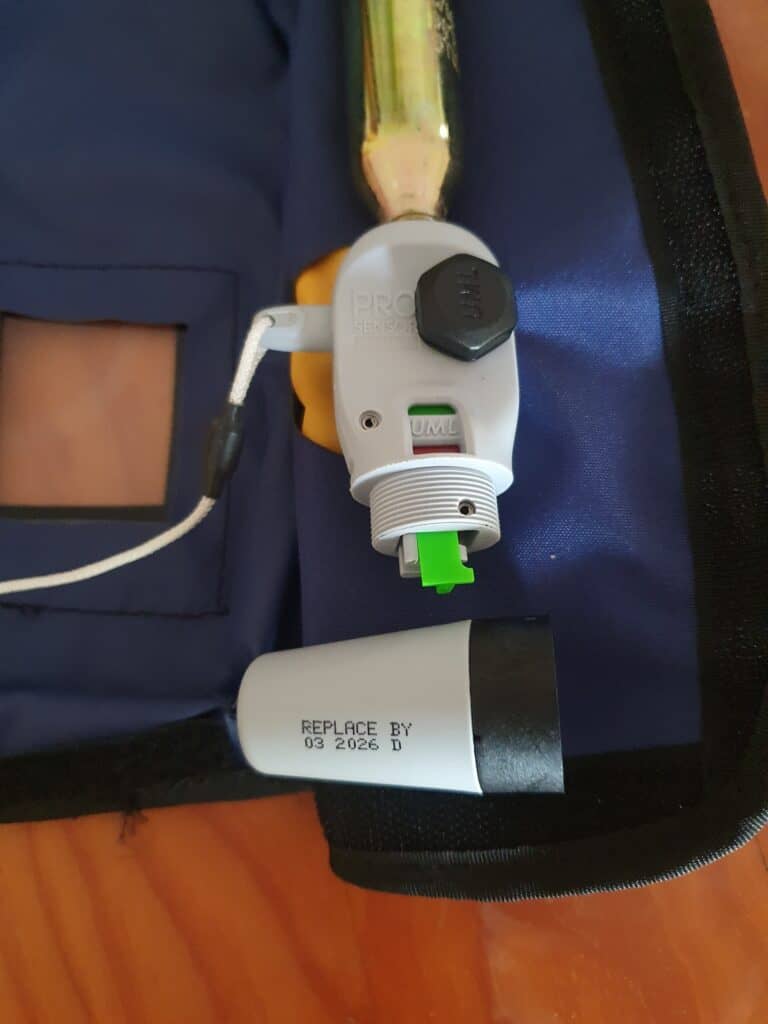
Rinse the life jacket with fresh water to remove salt, dirt, and other debris.
Gently scrub any tough stains or grime using a soft brush and mild soap. Avoid using harsh chemicals or bleach as they can damage the fabric or compromise buoyancy materials.
Once clean, allow it to air-dry completely out of direct sunlight; this prevents UV damage that could weaken the material over time.
Inspect your life jacket for signs of wear and tear such as fraying straps, loose stitching, cracked buckles or zippers, and delamination in foam panels before storing it in a cool, dry place away from heat sources.
Regularly checking for damages will ensure your safety while wearing the life jacket during water activities.
Are There Specific Life Jacket Types Or Designs Recommended For Different Water Activities, Such As Kayaking, Sailing, Or Water Skiing?
Yes, there are specific life jacket types or designs recommended for different water activities, such as kayaking, sailing, or water skiing.
For kayaking and canoeing, a paddling-specific life jacket with large arm openings for increased mobility is ideal.
Sailing enthusiasts should opt for offshore or inshore life jackets that have added buoyancy to keep the wearer’s head above water even in rough conditions.
Water skiers and wakeboarders typically benefit from competition-style vests that offer flexibility while still providing adequate flotation.
It’s important to choose a life jacket designed for your intended activity to ensure maximum safety and comfort on the water.
Can Life Jackets Be Recycled, Or Are There Any Eco-Friendly Options Available On The Market?
Yes, life jackets can be recycled, and there are eco-friendly options available on the market.
Many manufacturers have started producing life vests made from sustainable materials such as recycled plastics or plant-based foams.
Additionally, some companies offer recycling programs for used life jackets, breaking them down into their core components to create new products.
When searching for an environmentally friendly life jacket option, look for certifications like Bluesign or OEKO-TEX standards that ensure responsible manufacturing practices and reduced environmental impact.
How Do I Choose The Right Life Jacket Size For Children, And Is There A Specific Age Limit For Using Life Jackets?
As the saying goes, ‘one size doesn’t fit all,’ especially when it comes to choosing the right life jacket size for children.
To ensure a proper fit and safety, you should measure your child’s chest circumference and weight, then consult the manufacturer’s sizing chart specific to each life jacket model. Keep in mind that snugness is essential; lift the shoulder straps of the worn life jacket to check if it rides up too high on their face or ears. For children always choose a lifejacket with a crutch strap.
While there isn’t a strict age limit for using life jackets, infants under 18 pounds are generally advised against wearing them due to potential risks associated with their developing neck muscles and head support. Instead, opt for alternative flotation devices designed explicitly for younger babies or toddlers after consulting with an expert or pediatrician.
In Case Of Emergencies Or Accidents, What Additional Safety Features (Such As Reflective Materials Or Built-In Whistles) Can Be Found In Life Jackets?
In case of emergencies or accidents, life jackets may come equipped with additional safety features to enhance visibility and facilitate communication.
Some examples include reflective materials that increase the wearer’s visibility in low-light conditions, built-in whistles for signaling distress, and strobe lights or light sticks that can be attached to the jacket.
Other advanced features might consist of a personal locator beacon (PLB) for transmitting your location to search and rescue teams or an integrated harness system designed for use with safety tethers on boats.
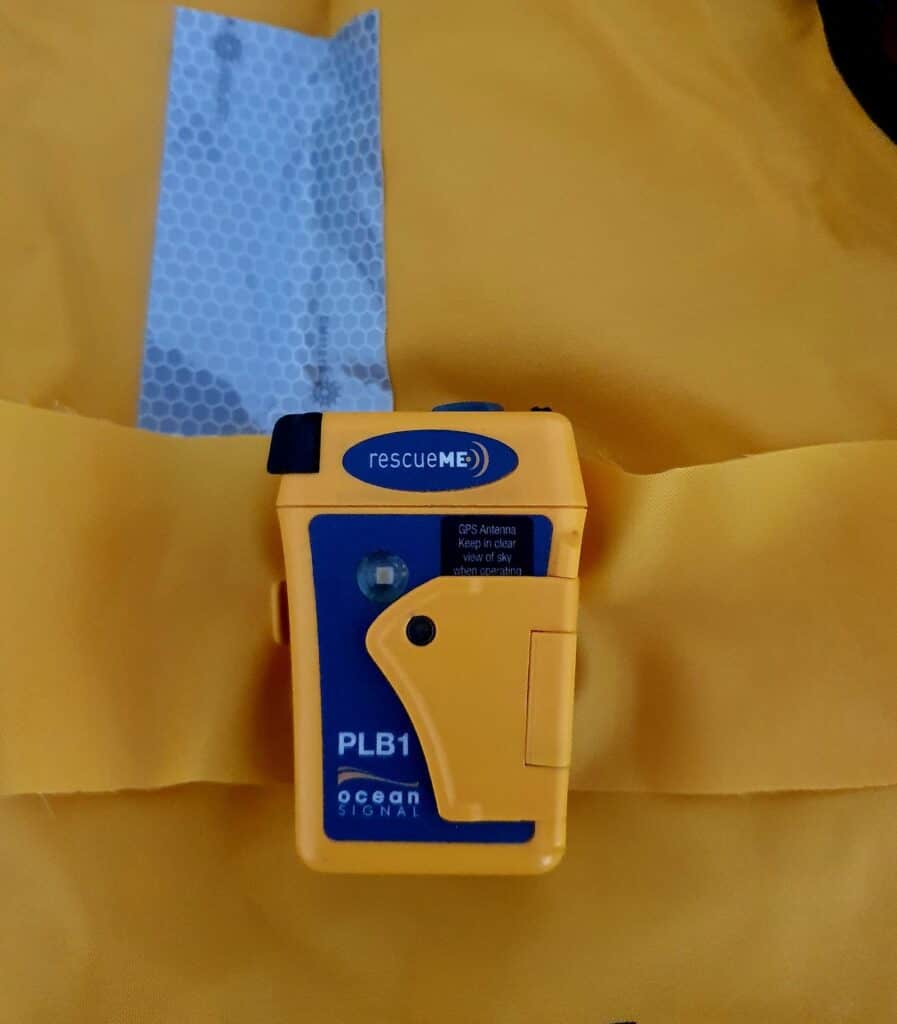
These added components aim to improve user safety by providing more effective means of detection and rescue during critical situations.

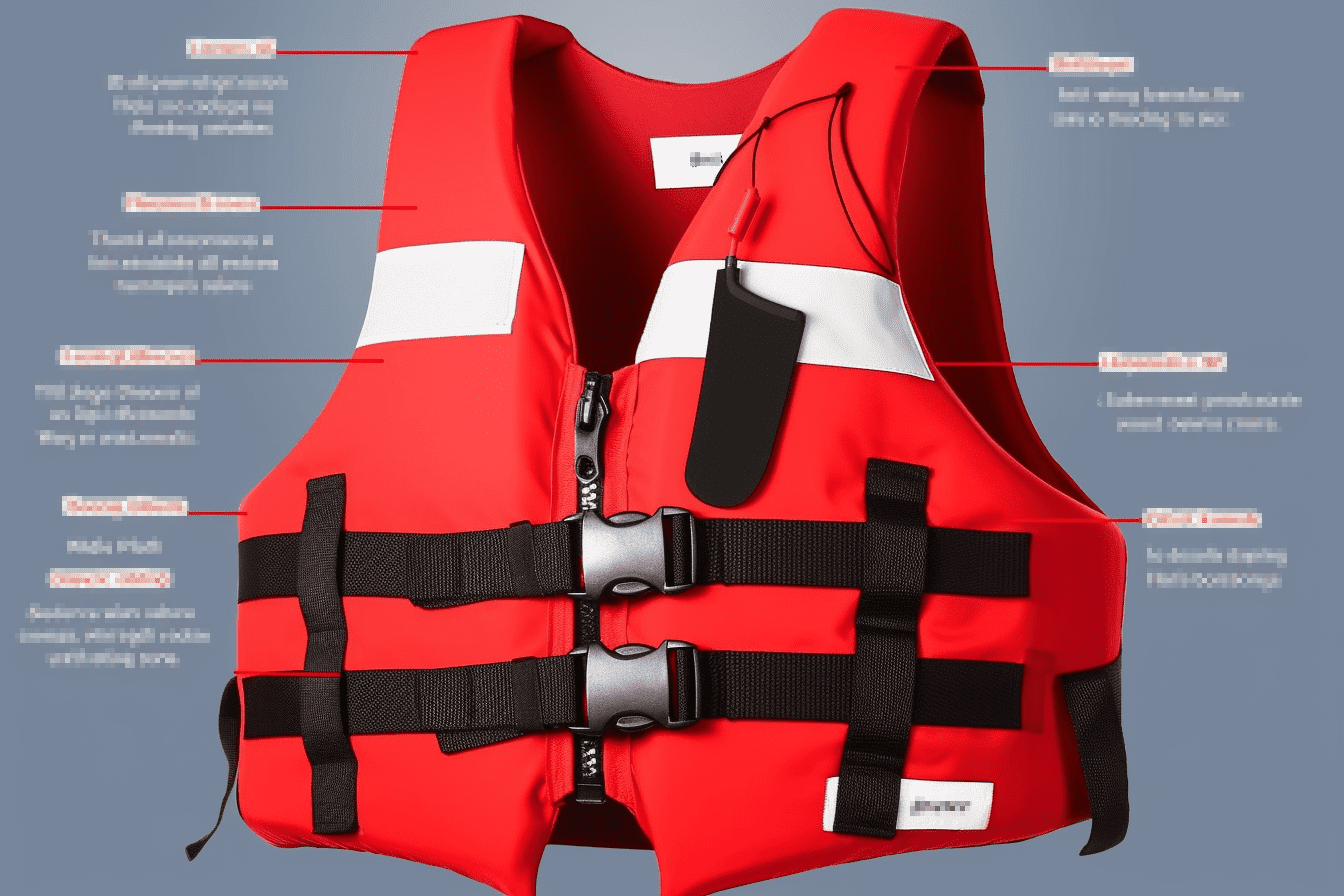
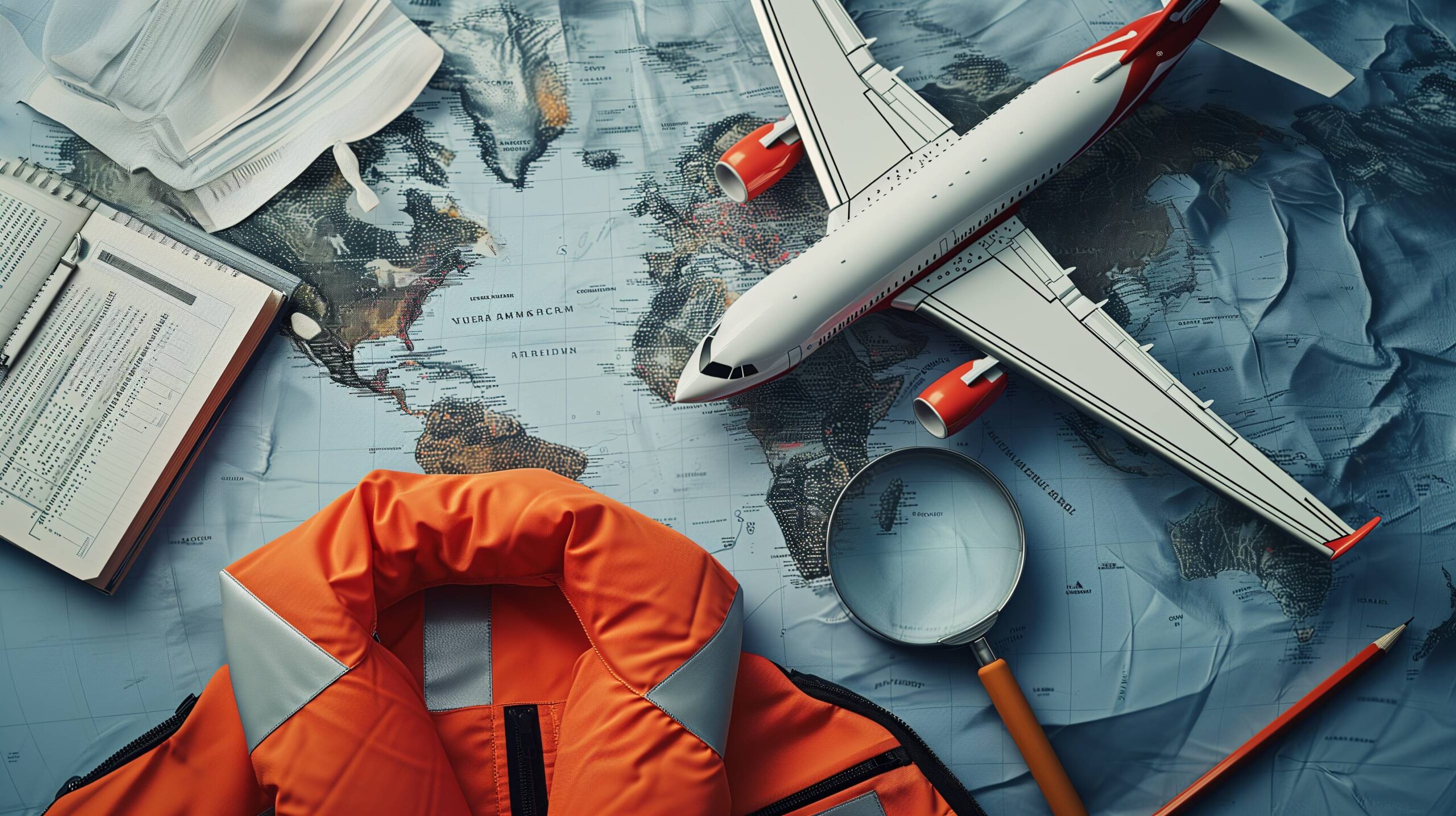
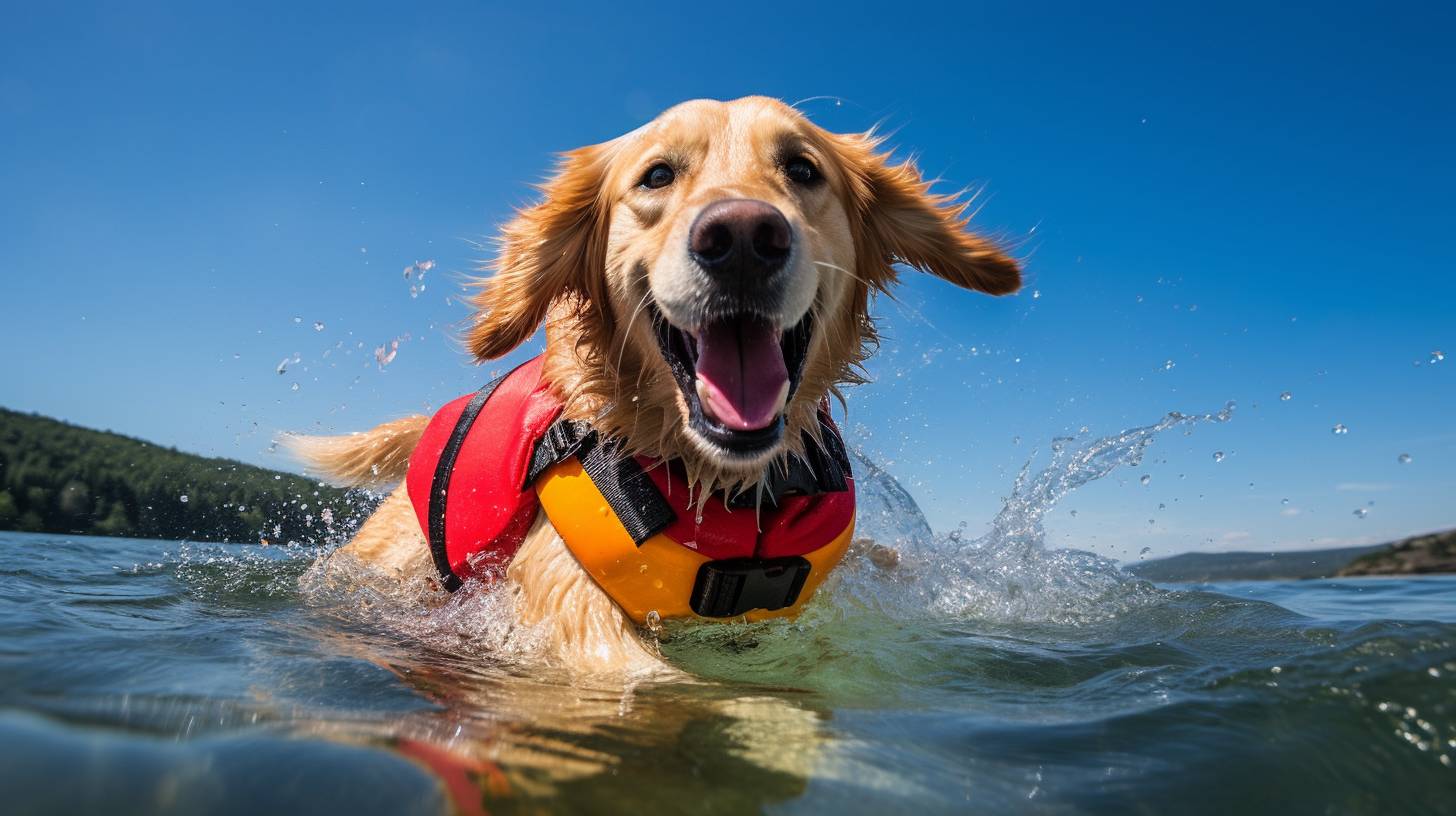
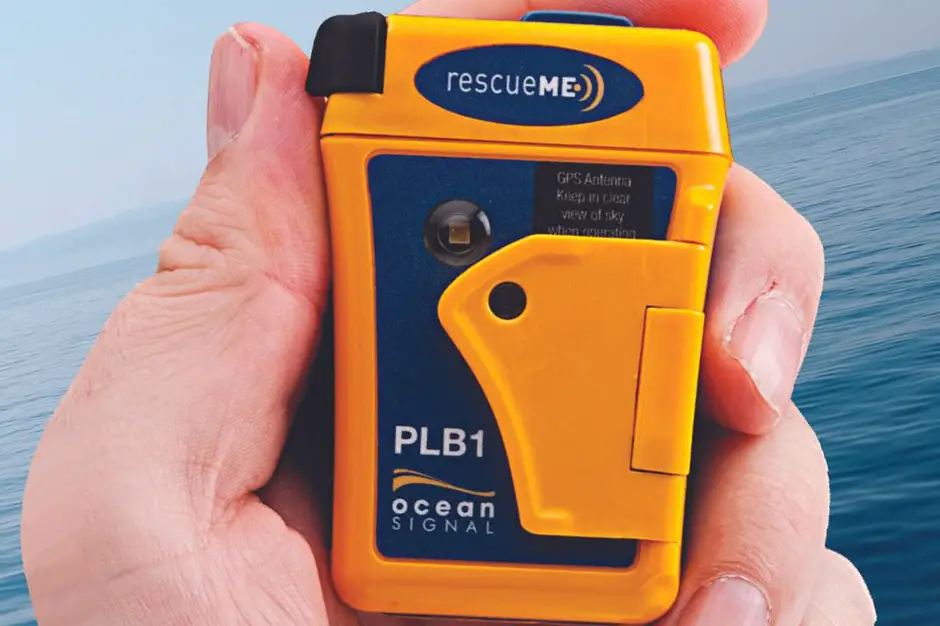
Leave a Reply